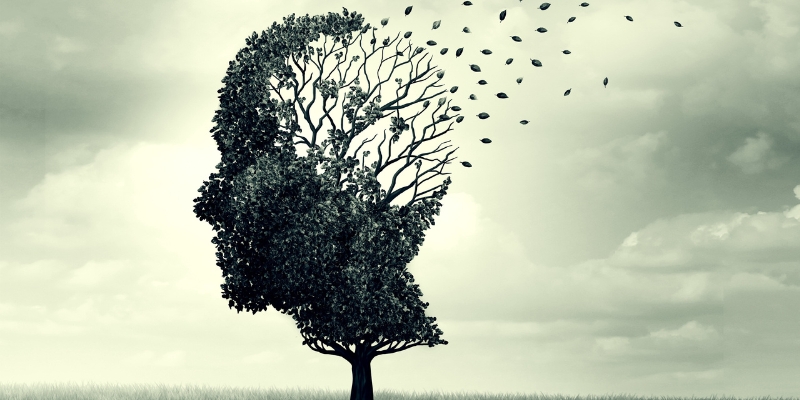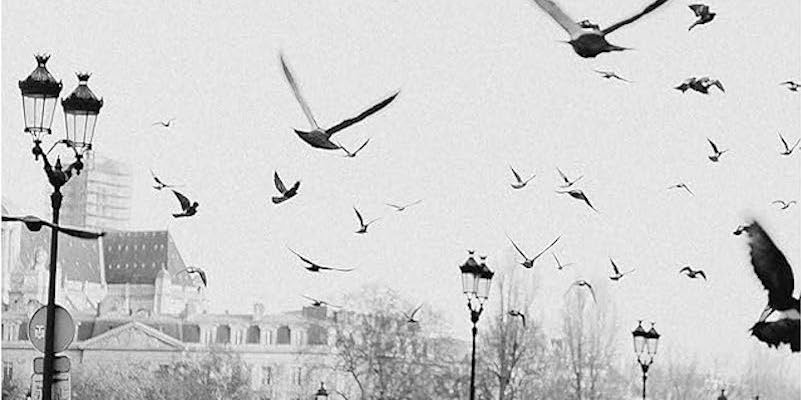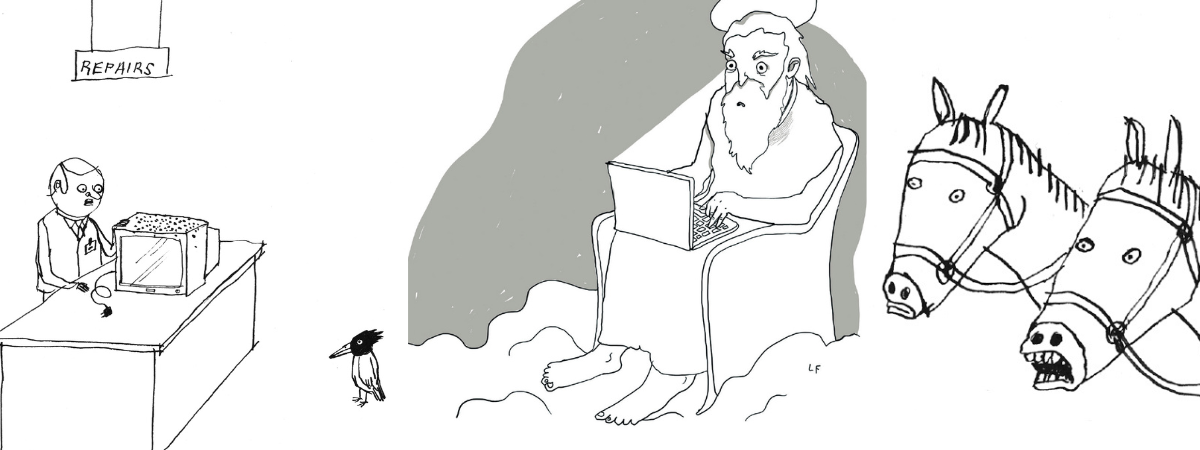I keep a list of doppelgänger stories. Some are like Dostoevsky’s eerie The Double, where it’s not totally clear if the double exists in real life or is a frenzied hallucination of the troubled main character. Article continues after advertisement In others, the original brings a menacing double into being, as in Hans Christian Andersen’s frightening fairy tale “The Shadow”: a scholar’s shadow, by mutual agreement, separates. As his own man, the shadow becomes worldly and rich but feels disadvantaged by not casting a shadow himself. He returns and offers to hire the scholar to play this role. It doesn’t go well. In these stories, as with José Saramago’s more recent The Double, the double’s existence is accounted for up to a point but the rest is psychology, as real as anything we invent or cannot prove, but that has real impact on our actions and relationships. There’s also a whack of twin stories, like Dorothy Baker’s Cassandra at the Wedding, Edward Carey’s Alva and Irva or Bruce Chatwin’s On the Black Hill. They function differently. The early psychoanalyst Otto Rank, in a monograph called The Double, said the impulse to rid oneself of the uncanny opponent in a violent manner belongs to the essential features of the motif, but the formula doesn’t hold when the double is not conjured out of sinister ether but rather born from the same egg, the same flesh. In these cases, the essential struggle is not about a threat to one’s uniqueness but about the pain of separation and self-definition after growing up as one half of a pair. Article continues after advertisement My most recent book, The Charterhouse of Padma, has a mirrored narrative that feels surreal though the impetus is recognizable: the desire to believe there’s a better version of ourselves out there, perhaps one we might still become (thinner or more patient or more successful) or one that we might have been if not for some wrong turn. It’s a smaller version of a larger question, reflected in films like Everything Everywhere All at Once and Sliding Doors: who else might I be? And how much of that is my choice? I suspect my tendency to think in mirrors comes from my own life having been shaped by two doubled architectures, one imagined, one real. The imagined one is still intact; the real one maimed by loss. This is the imagined one: another me growing up in India, a scenario in which my parents never left. In my real life, my father moved his siblings and parents out of their family home into a single room with a shared bathroom and then came to the US, in 1957, to start a PhD. He supported his family on his graduate student stipend until he gave up on his dissertation and instead took a teaching job in Canada. On a summer visit home eight years later, he married my mother, chosen by his parents for him. (The young couple met briefly and consented.) College-educated, comfortable in English and game for the adventure of immigration, she joined him in Canada and they never really looked back. But I did. What if his father hadn’t gone bankrupt? I wondered. What if his mother—who always regretted letting him leave—had prevailed? Or what if my mother’s family had suggested my dad return and take a job back in India? Article continues after advertisement Any of these eventualities would have given me a different body—I would have grown up vegetarian, plus Indians’ posture and gait are different—as well as different cultural influences and values. My hair might be frizzier from daily sun; I’d use another English and have a lot more Tamil in my brain. But how different would I be fundamentally? Would I still have become a writer? I would still have come of age in the moment when South Asian English fiction leapt onto the world stage. But what books would have emerged from a different set of personal yearnings, political conflicts and societal concerns? Who would I have married? Such musings were at their most acute long before career or family, though, when I was a teenager and in the throes of identity formation. Right around that time, I met the real equivalent of a better self. My mother had gone away to college at sixteen and was assigned a roommate, Lakshmi, from whom she was inseparable through those years. Lakshmi also ended up emigrating and, like my mother, had two daughters. The elder, Buvana, was about a year older than me. (In Tamil, her name and my mother’s, Bhuvana, are the same.) Buvana’s family lived in Rhode Island. When I was sixteen, we visited them. I didn’t have high expectations. Growing up in western Canada, I had few Indian friends, none in my own grade at school, and years of bullying and racial taunts had resulted in a self-hatred whose primary symptom was a desire to disavow my Indianness. Plus my friend group at that point was complicated: it was apparently okay to be pretty if you weren’t also good at school, good at school if you weren’t also witty, witty if you weren’t also popular. Article continues after advertisement Teenage Buv was like a blast of Evian water from one of the purse-sized spray bottles I pretentiously carried back then. She was smart, pretty, friendly, cool (my first American 4th of July was spent drinking from bonfire to bonfire with her friends, girls and boys). And Indian! I hadn’t imagined someone could be so easy in her own skin. Confident, kind, down-to-earth, she got good grades, played sports and did Indian classical dance. When I returned to the masked ball of my social life in suburban Alberta, I had a new sense of who it was possible to be. Not that I could be like her. I was too attached to my darkness, my precious neuroses, to attain her levels of good cheer and accommodation. She was a complex thinker but without complexes, as far as I ever saw. But she did inspire me to be more myself. Our lives continued roughly in parallel. She majored in math and French literature at Wellesley, was hurt by love, went to graduate school, became a geologist specializing in water management, married a wonderful white-American guy called Bob, traveled, had two babies, then bought her parents’ house and built them an annex. I switched majors every year, spent years abroad doing random things, had life-threatening episodes of depression, became a writer, made a bad first marriage, moved to Montreal, met and married a wonderful white-American guy called Geoff, went to graduate school, had two babies, then bought a house in Arkansas and imported my parents from Canada, building them an annex. Article continues after advertisement Our moms, both intense and full of conviction, would giggle nonstop whenever they were together. Our dads are mild, supportive, practical. We all met up whenever circumstances allowed, plus our parents took one glorious holiday together as couples and Buv and I did, too, with our families. Then cancer. It was spring 2021. We’d managed to see each other several summers in a row until the pandemic and wanted to revive the streak with another bi-familial holiday but when I called Buv to plan, she told me, “I’m sick. Like, really sick.” The cancer was uncannily rapid and pernicious. Instead of taking a holiday, our family rented a hotel room as close as we could get to Buv’s place and visited whenever she was well enough to see us. She fought hard and had the best medical and personal support imaginable. Friends, relatives, sister, kids, parents, husband—everyone loved her so well, so fiercely. She died on January 19, 2022. Some think of the soul as the first double, Freud said in his monograph The Uncanny, a helical symbolism: assurance of immortality or harbinger of death. A year before Buv died, I’d started writing The Charterhouse of Padma. It featured a South Asian-Canadian translator I called P, living in Arkansas but married to a white-American man very different from my own and wrassling with demons of self-loathing. With everyone confined to their houses by the pandemic, I was thinking about gothic literature, in which the greatest dangers come from the closest sources, where home is a threat. The implication is that P is internalizing what she cannot prove: her marriage is destroying her. My own pandemic experience was different. Life in Arkansas had often been a challenge. Podded up with my family (one spouse, two kids, three parents and five pets) but freed from unwanted interactions, I felt relief. A double grew, imagined and bodied forth by P, someone superficially like her but “less lonely, more independent, more angry, more maternal, more fun.” I saw this double as a companion and support to P, someone who would inspire her to go after her life and not blame herself for her missteps, much less for factors beyond her control. I had no idea that, a year later, I would lose the person who had given me a similar gift. I don’t want to overstate my loss. Clearly Buvana’s husband, parents, sister and kids have suffered far more than I have. But I was—I am—one pillar in a multi-generational structure where she was my counterpart, a stronger, better-defined, more intact one, and, apart from missing her laugh, her insights and the pleasures of growing old together, I feel this destabilization acutely. My character P came to suspect that her husband has been manipulating her but also that she had succumbed or bought in to values or structures previously invisible to her, such as moving for a job and working all the time instead of making friends, that isolated her and made her dependent on him. Sometimes, a shock or realization can make us step outside our lives to question our choices, or what we thought were our choices, or what we thought was not our choice at all, make us think back to the times we saw a fork in the road and took one, because you have to take one, you can’t take both and be one traveler. Except in fiction. I hadn’t known when I started the book that Buv would be gone when I finished it. P has no such person in her life and so conjures one, who takes over the story for a while. Her counterpart is not without her problems, but different ones, and I feel P leaning on her, until, gradually, she’s ready to take off on her own. ______________________________ The Charterhouse of Padma is available via Godine.

 By Literary Hub | Created at 2024-11-14 10:09:55 | Updated at 2024-11-21 13:44:03
1 week ago
By Literary Hub | Created at 2024-11-14 10:09:55 | Updated at 2024-11-21 13:44:03
1 week ago









